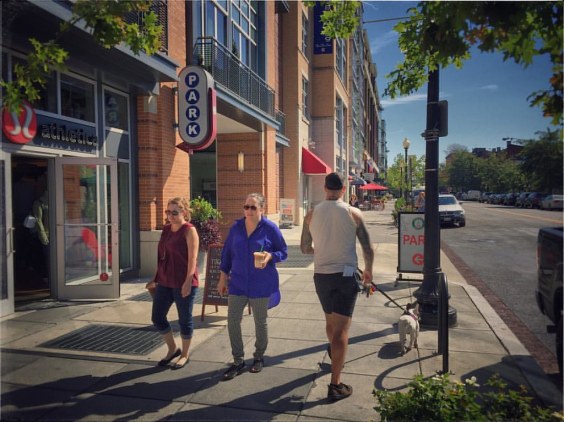
Earlier this week, the Healey-Driscoll administration touted the Town of Lexington and the City of Salem as the first two municipalities to be certified under the new MBTA Communities Law, which will compel suburbs in the MBTA service area to legalize more multi-family housing near transit stations.
Bigger towns and cities, and municipalities with better transit access, will be required to zone for more housing.
Earlier this week, the administration's Executive Office of Housing and Livable Communities determined that zoning laws in Salem and Lexington are officially in compliance with the new law.
But StreetsblogMASS has confirmed with planners in both towns that to date, the new law hasn't actually had any effect on the number of homes being built. Here's why.
New law required no changes in Salem
Salem seems to serve as an ideal case study in how the new MBTA Communities Law ought to work.
In January, Salem's planning board approved plans for a new 6-story building on the city-owned "crescent lot" next to the city's downtown MBTA regional rail station station (pictured at the top of this article).
That project would create 120 new homes, of which 78 would be set aside for lower-income households.
It's one of several multi-family housing proposals that are in the pipeline for Salem's walkable downtown.
Tom Daniel, Salem's Director of Planning and Community Development, told StreetsblogMASS that the city has permitted or built "a little over 400 homes" within half a mile of the train station since 2020.
If those projects all get built, it would represent a 2 percent increase in the city's total housing stock (Salem currently has about 21,000 homes).
But you can't credit the new MBTA Communities Law for Salem's progress: the city had already planned and zoned for new multi-family apartment buildings near its downtown train station long before the state's new rules took effect.
"For us, we had zoning that we believed was in compliance from the beginning, and we confirmed that it was," Daniel told StreetsblogMASS. "So we’re certified using our existing downtown zoning district, which demonstrates how a community like ours can spark smart growth and transit-oriented housing as the law intended."
New zoning, but still no new development in Lexington
By contrast, the Town of Lexington, an unusually wealthy suburb northwest of Boston, actually did have to amend its zoning laws in order to comply with the new state law.
Lexington doesn't have an MBTA rail station, but it's adjacent to several other communities that do, and there are several local bus routes that cross the town.
Under the state's rules, Lexington needed to create zoning districts big enough that builders could theoretically add 1,231 new apartments (10 percent of the town's existing housing inventory).
In Lexington's annual Town Meeting in April, voters endorsed a plan to comply by re-zoning several existing commercial and mixed-use districts – including Lexington's town center and several other crossroads – to allow for multi-family apartment buildings up to 60 feet tall (about 5 stories).

In a small handful of suburban office parks on the west side of Route 128, far from existing neighborhoods (the green areas in the zoning map above), the town will allow mixed-use commercial buildings that are up to 115 feet tall.
Lexington's zoning changes went above and beyond what the state required, and the Town Meeting endorsed the new zones long before the law's Dec. 31, 2024 deadline.
But though it's been eight months since Lexington adopted those reforms, Lexington planners confirmed with StreetsblogMASS on Wednesday that they still haven't received any applications for new apartment projects in the new zoning districts.
New law still has 175 more chances to make a difference
Jesse Kanson-Benanav, the executive director of Abundant Housing Massachusetts, told StreetsblogMASS that zoning reform is "a first step" for addressing the housing shortage, but governments still need to address many other barriers.
Homebuilders are facing higher interest rates that increase the costs of home loans, plus labor shortages for construction workers. And many property owners aren't interested in kicking out their existing tenants so they can take a risk on building a bigger apartment building.
"We're in such a deficit for housing in Massachusetts – we've had over 30 years of not building enough housing. So zoning reform is critical, but it alone is not going to solve the problem overnight," says Kanson-Benanav.
Kanson-Benanav is still optimistic about the new law.
He notes that besides Salem and Lexington, 175 other cities and towns across eastern Massachusetts will need to comply with the new rules. Many of those municipalities are now in the process of analyzing and revising their zoning laws.
Close-in suburbs that have a subway or light rail station within half a mile of their borders, like Medford, Milton, and Newton, face a December 31 deadline to do so.
Towns with commuter rail stations and and commuter-rail-adjacent communities (like Lexington) have until Dec. 31, 2024 to submit their plans to the state.






